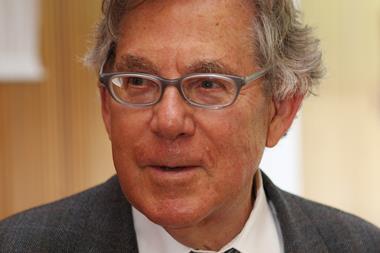Atmospheric chemist Frank Sherwood Rowland died on Saturday 10 March, aged 84
Atmospheric chemist Frank Sherwood Rowland died on Saturday 10 March, aged 84, from complications related to Parkinson’s disease. He was best known for his work with postdoc Mario Molina that showed that chlorofluorocarbons (CFCs) can destroy ozone. Rowland campaigned for a ban of the then widely used CFCs.
In 1987, some years after the original discovery of the action of CFCs, and following evidence that their use had led to the formation of a hole in the ozone layer above the Antarctic, CFCs were finally banned from sale. ‘His publicising the adverse effects of the release of CFCs in the 1970s did not endear him to industry, but eventually led to his Nobel prize, which he shared with Mario Molina and Paul Crutzen,’ said RSC president David Phillips in a statement. ‘In the early stages of his research on CFCs, he and his students used to travel the world taking air samples - I have some photographs of him doing just that in the grounds of the Vatican in Rome in 1982 where he and I were taking part in a discussion meeting of the Pontifical Academy of Sciences.’
Rowland did not slow up after his success with CFCs and, as well as continuing an active research career, he campaigned against other harmful air pollutants. In 2009, Rowland joined with other Nobel laureates to urge US president Barack Obama to increase funding for energy research and development. ‘The most important molecule involved in global warming is carbon dioxide,’ Rowland told Chemistry World at the time. ‘What we are looking for is energy solutions that are advanced and that can last for centuries or more, and chemists will need to be working on these things for an extended period.’
Rowland, known as Sherry, was born on 28 June 1927 in Delaware, Ohio. After receiving his PhD from the University of Chicago, while working with physical chemist Willard Libby, Rowland worked as a nuclear chemist and was a founding faculty member of the University of California, Irvine campus, which was to be his home from 1964. ‘He was a major force in atmospheric chemistry and, along with his family, he will be greatly missed by all of his colleagues too,’ Phillips said.












No comments yet